Musings
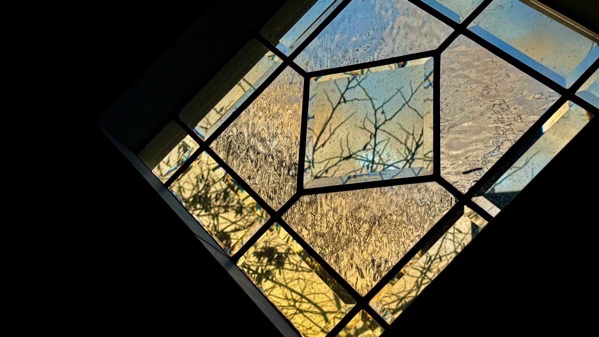
This morning we headed out on an errand and I noticed several houses had shrouded shrubs, mostly a white material, but sometimes black. A bit farther along, I noticed another black shroud, but it looked funny, so I looked closer, and discovered it was a covered motorcycle.
Posted at 8:59 PM |
No Comments »
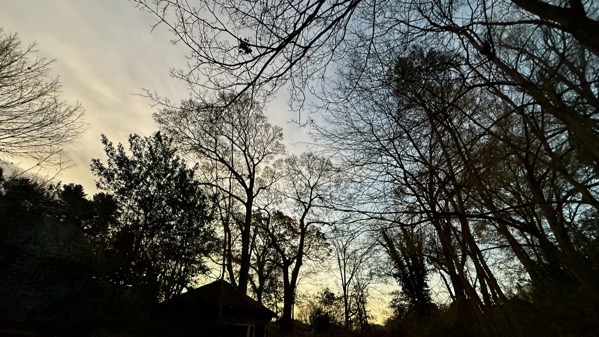
The rising sun appears cheerful and upbeat for this shortest day. I’m anthropomorphizing again.
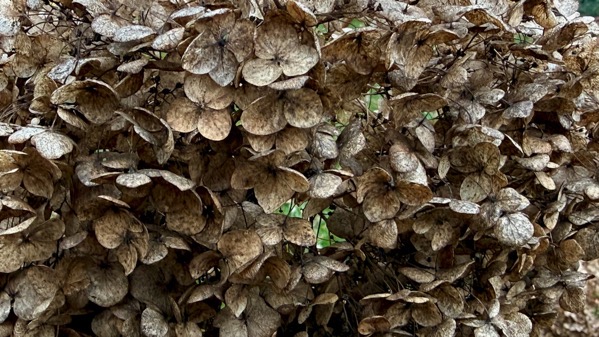
This evokes winter…with brown dried petals, and green lawn peeking through…so upbeat, despite the hibernal times.
Posted at 8:32 PM |
No Comments »

I’m calling this autumn gold. I find it much more approachable than Silver Glow, um?, nope: Cloud Dancer. That’s a shade of white being promoted for 2026, and that’s a purely dopey name.
Posted at 8:38 PM |
No Comments »
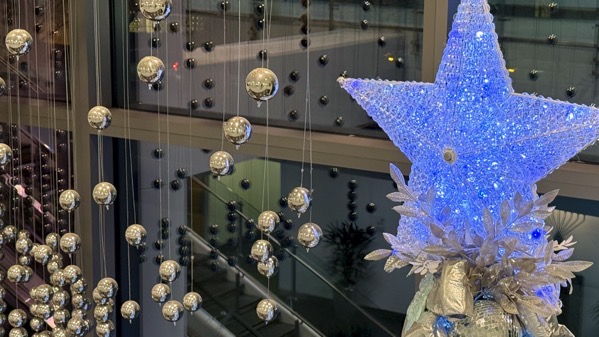
Our neighbor went for the easy, low-degree-of-difficulty, outdoor seasonal lighting. It’s a light with a slow-spinning color wheel in front of it pointed at the front of his house. Side benefit for us, the moving points of light come in our windows, too. [I would not be pleased at all if they came in the bedroom.]
Posted at 10:22 PM |
No Comments »

Grocery shopping almost always tops the chore list after a trip, as it did this morning. I looked in the fruit fridge display and thought, hmm, blueberry prices are cheaper, just a bit, but cheaper. Then, it hit me: the packages are the same, but now they have 11 oz, not 12. I’m still hot about it. [I tried to include the “flames” emoji, but my software won’t post it.]
Posted at 8:34 PM |
No Comments »

We rear-view-mirrored our A2 friends, and spent the afternoon (plus) with friends in one of the Grosse Pointes. We laughed a LOT, great fun.
This isn’t supposed to be frozen, but the heater conked out and the replacement didn’t work, and the replacement’s replacement is still in transit—if I have it right. Instead of sipping, the birds were busy at the feeders, and the squirrels were patrolling beneath them because they could not access the protected feeders.

We even got a chance to see their daughter’s new (to her) house, in which she’s installed an audio mixdown setup (I’m told that’s what it is). Need an album recorded? In our circle, she’s the one to call/text.
We’re on the move this evening, and I type this as we motor along parallel with Lake Erie’s southern shore. Yup, we sleep tonight in Ohio.
Posted at 7:47 PM |
No Comments »

Fast and _what_?
This was a manufacturer display we saw at a Meijer. This misspelling was on two of the four shelves.
Posted at 9:32 PM |
No Comments »

Northern Ohio is criss-crossed (sorta; more east-west than other directions) by train trax. Here’s a parallel pair.
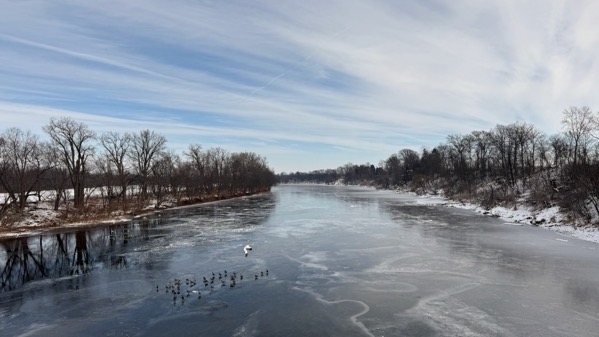
You may not know the Maumee, but it’s a major river in NE Ohio. Note the geese STANDING on the ice on the river.
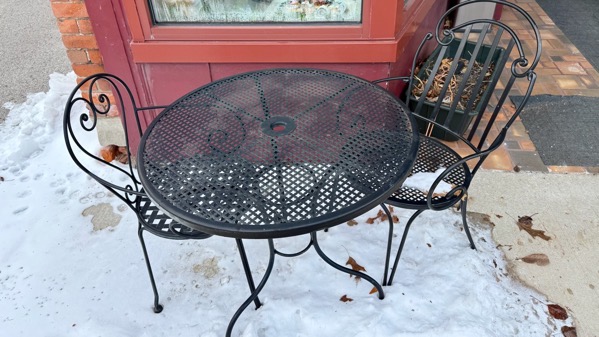
We stopped for lunch at a…unique…luncheree, shall we say, although we ate inside where it was not quite freezing, and not at this table.
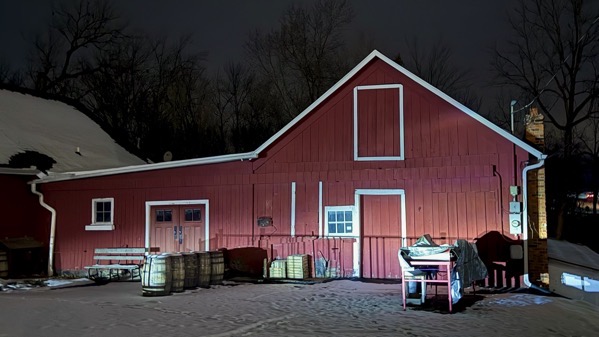
We ate this evening near this cider mill that I visited every fall when I was a kid and into my teens. I think in those days the only building was the part on the right. Inside, it reeked of fresh apple juice, and I thought the smell emanated from the beams and walls, and not just the mill, because the odor was so intense. On warm days, I remember worrying about the buzzing hornets/yellow jackets/whatever attracted by the apple-sugar.
Posted at 8:55 PM |
2 Comments »
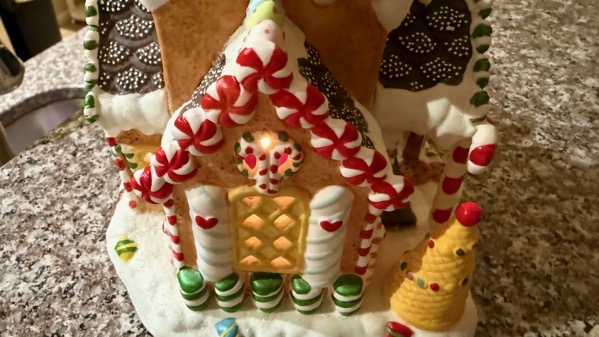
I drove about a mile to book club this evening, and discovered that many houses now have lights up. Our hostess had a large assortment of holiday art on display.
Posted at 9:43 PM |
No Comments »

Out on my walk, I found this seasonal cross-dressing yard decoration on a mossy hand-made bird-bath.

Later, we peeked in on the primo footsball game of the day if you’re from the states of Michigan and Ohio, and gee, look what MaNachur added to the scene. I liked the little marks (at this scale) that the players’ feet left, varying from clustered to dispersed. We even saw that the Ohio State mascot scripted out “Ohio” complete with i-dot, just as the marching band does it, by shuffling his feet in the snow; furthermore, he ex-ed out the Michigan M painted on the sideline or endzone…I wasn’t clear where it was. You can tell I wasn’t watching the plays.
Posted at 8:59 PM |
No Comments »















